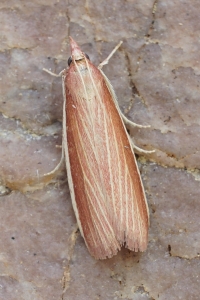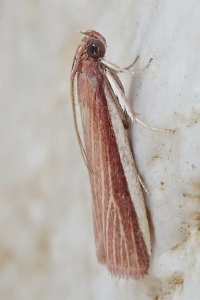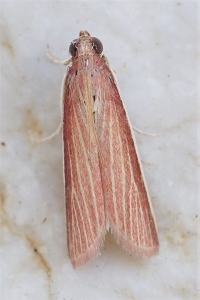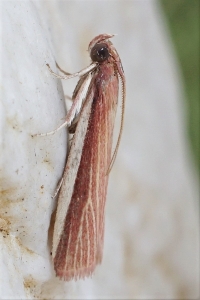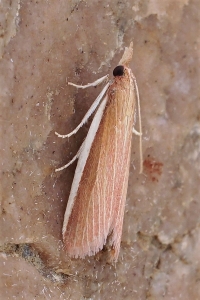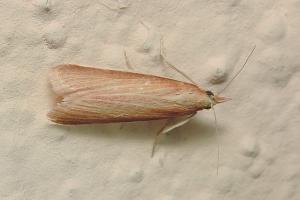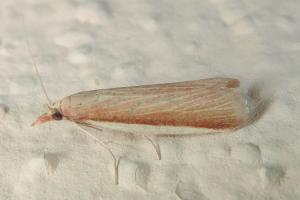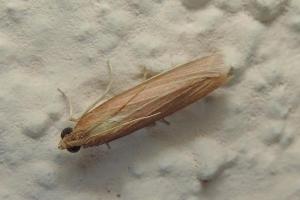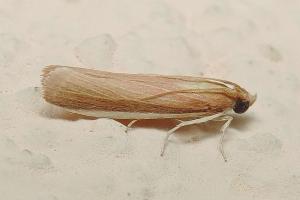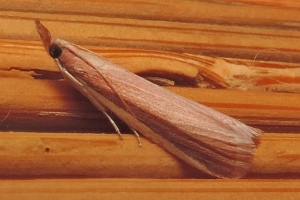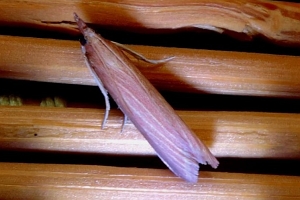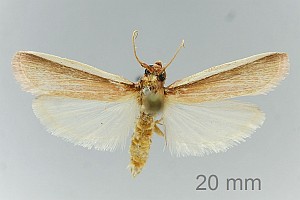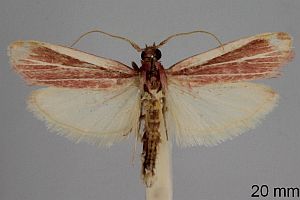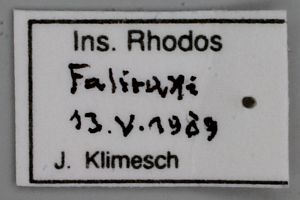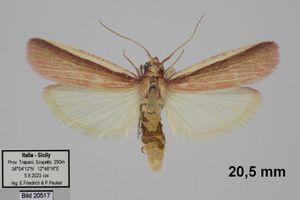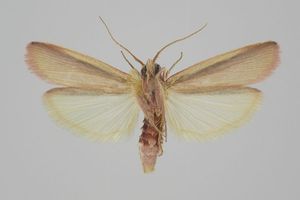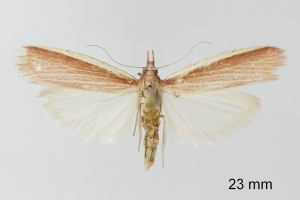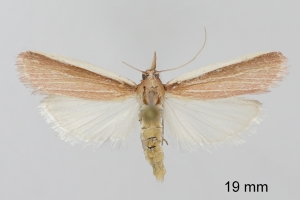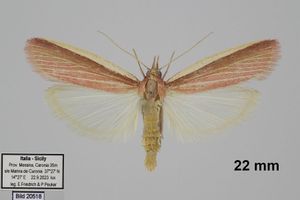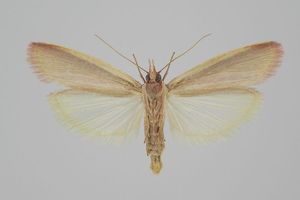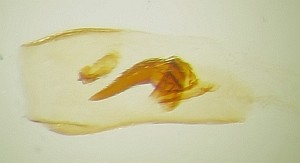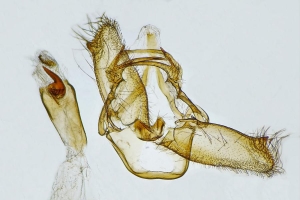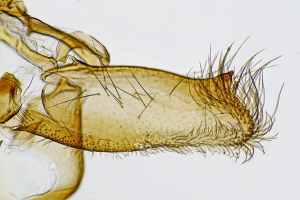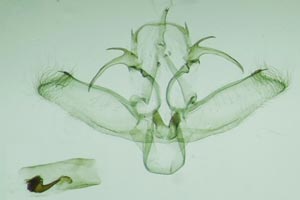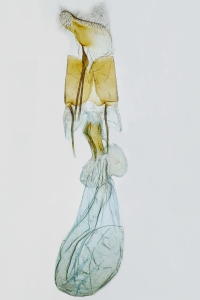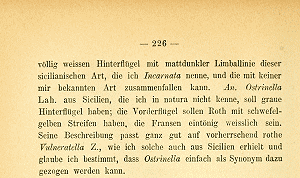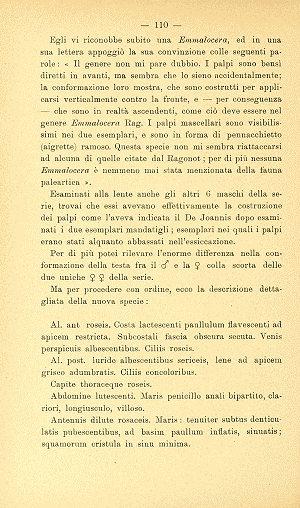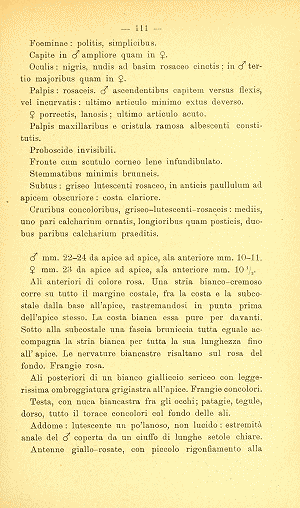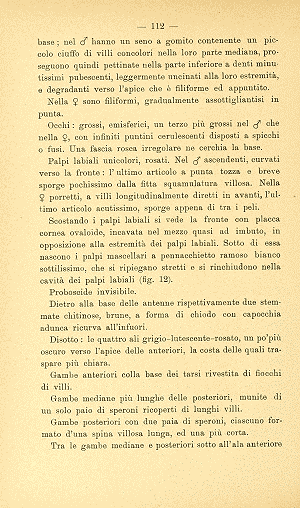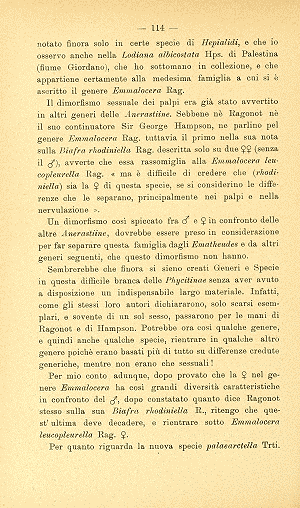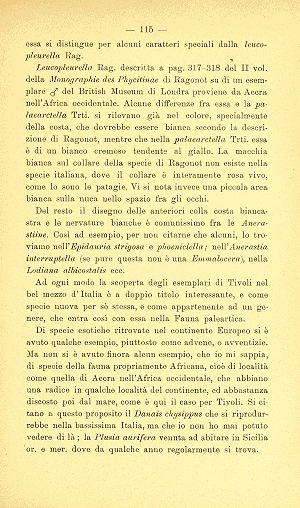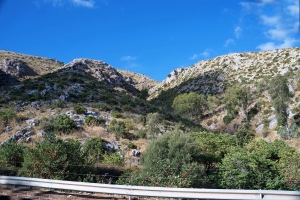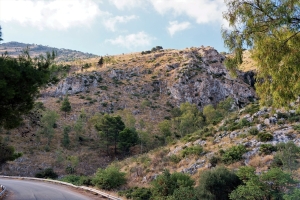

 +5Kontinente:EU
+5Kontinente:EU
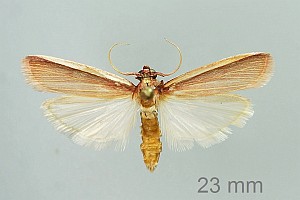
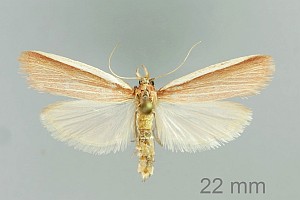
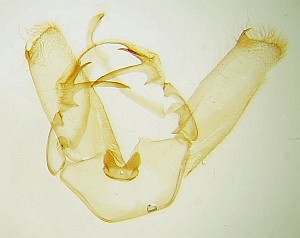
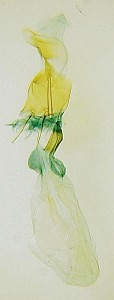
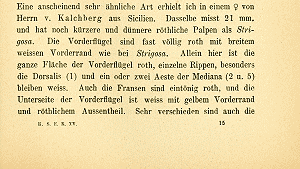
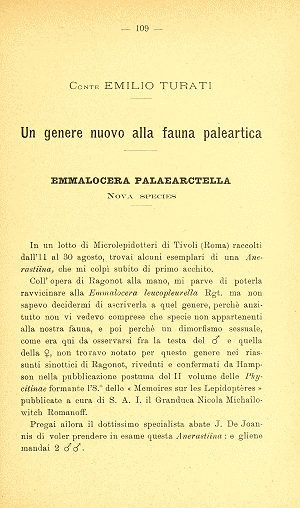
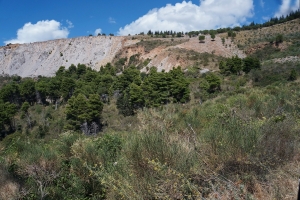
1. Lebendfotos
1.1. Falter
Anmerkung: die 6 Fotos aus Sardinien wurden bis zum 22.11.2023 irrtümlich unter Peoria cremoricosta gezeigt.
2. Diagnose
2.1. Männchen
2.2. Weibchen
2.3. Genitalien
2.3.1. Männchen
2.3.2. Weibchen
2.4. Erstbeschreibung
Die sehr ähnliche Art, auf die Staudinger zu Beginn der Erstbeschreibung verweist, ist Epidauria strigosa.
2.5. Beschreibung als Emmalocera palaearctella
4. Weitere Informationen
4.1. Etymologie (Namenserklärung)
Nach (Turati (1917) handelte es sich bei seiner Emmalocera palaearctella um den ersten Vertreter der Gattung in der Palaearktis.
4.2. Andere Kombinationen
- Anerastia incarnata Staudinger, 1879 [Originalkombination]
4.3. Synonyme
- Emmalocera palaearctella Turati, 1917 [synonymisiert durch Bidzilya et al. (2020)]
- Postemmalocera palaearctella (Turati, 1917)
4.4. Taxonomie
Leraut (2014) stellt die zuvor unter Postemmalocera palaearctella (Turati, 1917) geführte Art - mit einigen weiteren zusammen - in die Gattung Peoria: Peoria palaearctella. Die nur durch den Holotypus aus Sizilien bekannte Anerastia incarnata Staudinger, 1879 stellte er als Synonym zu Anerastia lotella.
Bidzilya et al. (2020): kommen zu ganz anderen Schlüssen: "Anerastia incarnata Staudinger, 1879 was described from a single male collected in Sicilia. Despite Staudinger (1879) compared it with Polyocha strigosa (Staudinger, 1879) and indicated characteristic red forewing with white costal margin, A. incarnata was synonymized with A. lotella, that well differs externally (Leraut 2014: 90). The holotype of A. incarnata matches well both externally and in the genitalia Peoria palaearctella (Turati, 1917) that is known from Italy (including Sardinia), Malta and Greece (Rhodos). Hence, the following synonymy is proposed: Peoria palaearctella (Turati, 1917) syn. nov. of Peoria incarnata (Staudinger, 1879) spec. rev., comb. nov."
4.5. Faunistik
Von diesem Taxon war sehr lange Zeit nur der Holotypus aus Sizilien bekannt. Dies änderte sich mit der Einbeziehung von P. palaearctella als Synonym. Locus typicus dieses Synonyms ist Tivoli (Rom) in Italien; nach Leraut (2014) tritt das Taxon auf dem italienischen Festland, in Sizilien und auf Malta auf. Bidzilya et al. (2020) ergänzen noch Rhodos (Griechenland).
(Autor: Erwin Rennwald)
4.6. Literatur
- Bidzilya, O., Budashkin, Y. & V. Yepishin (2020): Review of the tribe Anerastiini (Lepidoptera: Pyralidae: Phycitinae) from Ukraine. — Zootaxa 4718 (1): 1–24. [https://doi.org/10.11646/zootaxa.4718.1.1].
- Leraut, P. (2014): Moths of Europe. Volume 4. Pyralids 2. - 441 S.; Verrières-le-Buisson (N.A.P Editions).
- Erstbeschreibung: Staudinger, O. (1879-1880 [159-368: 1879; 369-435: 1880]): Lepidopteren-Fauna Kleinasien's. — Horae societatis entomologicae rossicae 15: 159-435. St. Pétersbourg (V. Besobrasoff & Comp.).
- Beschreibung als Emmalocera palaearctella: Turati, E. (1916) [1917?]: Un genere nuovo alla fauna palaeartica: Emmalocera palaearctella Nova species. — Bullettino della società entomologica italiana 48: 109-117. Firenze - Roma (Tipografia Cenniniana).






